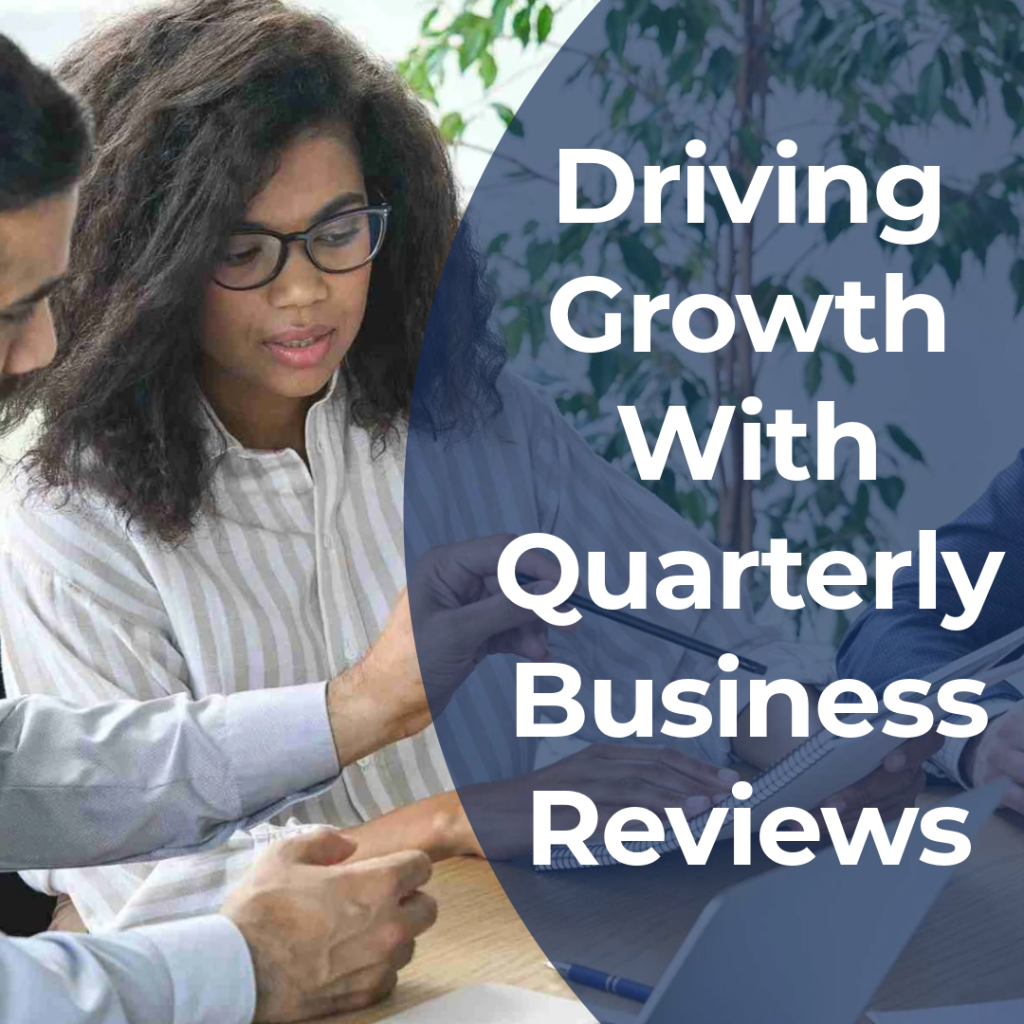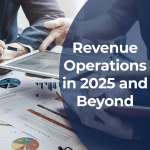How Quarterly Business Reviews Drive Lead Generation and B2B Sales for Tech Startups
Imagine a tool that not only strengthens your customer relationships but also aligns your business goals and drives lead generation. Welcome to the world of Quarterly Business Reviews (QBRs). In this fast-paced tech landscape, QBRs are the secret weapon for startups and scale-ups aiming for sustainable growth and market dominance.
Quarterly Business Reviews (QBRs) are more than just routine check-ins. They are strategic meetings that provide a platform for tech startups and scale-ups to review performance, align business goals, and identify new opportunities. This article explores the importance of QBRs, how to conduct them effectively, and their impact on lead generation and B2B sales.
What is a Quarterly Business Review (QBR)?
A Quarterly Business Review (QBR) is a strategic meeting held every three months between a business and its key clients or stakeholders. The primary purpose of a QBR is to review the past quarter’s performance, address any challenges, and plan for the upcoming quarter. Unlike regular status meetings, QBRs are more comprehensive, focusing on the overall health of the relationship and long-term strategic goals.
Key Components of a QBR
- Performance Review: Evaluating the success and areas of improvement in the previous quarter, often using key performance indicators (KPIs) and metrics.
- Strategic Alignment: Ensuring that the client’s business objectives align with the company’s offerings and exploring ways to enhance this alignment.
- Opportunity Identification: Discussing potential growth areas, new products, or services that could benefit the client.
- Action Planning: Developing a roadmap with specific actions, responsibilities, and timelines to achieve the discussed goals.
The Importance of Quarterly Business Reviews
One of the primary benefits of QBRs is that they help strengthen customer relationships. When you dedicate time every quarter to review performance and discuss future plans, you show your clients that you are committed to their success. This regular engagement fosters trust and loyalty, making clients feel valued and understood. In fact, businesses that engage in regular customer reviews have a 60-70% higher customer retention rate than those that don’t.
QBRs provide an opportunity to ensure that the client’s evolving needs and goals are still aligned with the company’s offerings. This alignment is crucial for maintaining a strong, mutually beneficial relationship. During a QBR, businesses can adjust their strategies and services to better meet the client’s current and future needs, thereby staying relevant and competitive.
QBRs offer a structured environment to identify new opportunities for growth, whether through upselling, cross-selling, or introducing new services. Additionally, these meetings allow both parties to discuss potential risks and challenges that could impact the relationship or project success. Addressing these issues proactively helps mitigate risks and capitalize on opportunities more effectively.
How to Conduct an Effective Quarterly Business Review
Conducting a successful QBR requires careful planning, execution, and follow-up. Here’s a comprehensive guide to help you navigate each stage of the process.
Step 1: Pre-meeting Preparation
Data Collection and Analysis Before the QBR, gathering and analyzing relevant data is crucial. This includes performance metrics like sales figures, customer satisfaction scores, product usage statistics, and any other KPIs that reflect the client’s business health. Analyzing these data points helps identify trends, patterns, and areas that need attention during the review.
Setting Objectives and Agenda Clear objectives are essential for a productive QBR. Determine what you want to achieve in the meeting—whether it’s resolving a specific issue, exploring new opportunities, or realigning business goals. Once objectives are set, create a detailed agenda that outlines the topics to be discussed. This will help keep the meeting focused and ensure that all critical areas are covered.
Customizing the Review Every client is unique, so it’s important to tailor the QBR to their specific needs and industry context. This involves customizing the presentation, data points, and discussion topics to reflect the client’s business goals and challenges. Additionally, consider incorporating feedback from previous QBRs to address ongoing issues and ensure continuity.
Step 2: During the Meeting
Opening the Meeting Start the QBR by setting the tone with a brief overview of the agenda and goals for the meeting. This helps align expectations and ensures that both parties are on the same page. If this is not the first QBR, it’s also helpful to recap key points from the previous review to provide context and continuity.
Reviewing Performance Metrics One of the main purposes of a QBR is to review the performance of the past quarter. Discuss key performance indicators (KPIs) that are relevant to the client’s business objectives, such as revenue growth, customer satisfaction, or product adoption rates. Highlight successes, acknowledge areas that need improvement, and provide insights into what drove the outcomes.
Discussing Challenges and Opportunities After reviewing performance, shift the focus to discussing challenges and opportunities. Identify any obstacles the client is facing and propose potential solutions. This could involve refining existing strategies, reallocating resources, or exploring new initiatives. Additionally, use this time to discuss new opportunities for collaboration, such as introducing new products or services that could benefit the client.
Collaborative Planning QBRs should be a collaborative effort between the business and the client. Engage the client in strategic discussions to align on future goals and objectives. Work together to develop an action plan that includes specific next steps, responsibilities, and timelines. This collaborative approach not only ensures buy-in from the client but also strengthens the partnership.
Closing the Meeting Conclude the QBR by summarizing key takeaways, agreed-upon actions, and next steps. It’s also important to set the date and objectives for the next QBR, ensuring a continuous cycle of review and improvement. This final step reinforces the commitment to ongoing collaboration and accountability.
Step 3: Post-meeting Follow-up
Documenting the Outcomes After the meeting, document the key outcomes, including action items, deadlines, and responsibilities. This summary serves as a reference for both parties and ensures that everyone is on the same page regarding what needs to be done before the next QBR.
Ensuring Accountability Assign ownership of tasks and monitor progress regularly to ensure that the agreed-upon actions are being implemented. This might involve scheduling follow-up meetings or check-ins to track progress and address any issues that arise. Ensuring accountability helps drive continuous improvement and maintain momentum between QBRs.
Continuous Improvement Gather feedback from the client on the QBR process and use it to refine future reviews. This could involve adjusting the format, focusing on different areas, or improving how data is presented. Continuously improving the QBR process ensures that it remains valuable and relevant to the client’s needs.
Best Practices for Quarterly Business Reviews
To maximize the effectiveness of your QBRs, consider implementing the following best practices:
- Personalizing the Review: Tailor each QBR to the client’s unique needs and business context to ensure relevance and engagement.
- Using Data-Driven Insights: Base your discussions on concrete data and insights to provide value and build credibility.
- Establishing a Regular QBR Schedule: Consistency is key. Set a regular QBR schedule and stick to it to maintain momentum and build trust.
- Encouraging Open Communication: Foster an environment where the client feels comfortable sharing their challenges and feedback. Open communication leads to more effective collaboration and problem-solving.
Impact of QBR on Revenue Operations (RevOps)
QBRs play a significant role in the success of Revenue Operations (RevOps), which focuses on optimizing the alignment and collaboration between sales, marketing, and customer success teams to drive revenue growth.
Aligning Sales, Marketing, and Customer Success
QBRs help ensure that all RevOps functions—sales, marketing, and customer success—are aligned with the client’s needs and business goals. Reviewing performance and strategic objectives regularly facilitates better coordination between these teams, ensuring that everyone is working towards the same targets. This alignment is crucial for delivering a seamless customer experience and maximizing revenue opportunities.
Driving Data-Driven Decisions
The insights gathered during QBRs are invaluable for making data-driven decisions across RevOps. For instance, sales teams can use these insights to refine their pitches, marketing can adjust their campaigns to better target the client’s audience, and customer success teams can tailor their support to address specific challenges. Leveraging QBR data can help businesses optimize their RevOps strategies and drive more effective outcomes.
Enhancing Predictability and Forecasting
Regular QBRs contribute to more accurate revenue forecasting and better resource allocation. With a consistent review of performance and discussions of future goals, businesses can gain a clearer understanding of their revenue pipeline and make more informed predictions. This predictability is essential for effective planning and decision-making within RevOps.
Improving Customer Lifetime Value (CLTV)
QBRs play a crucial role in enhancing Customer Lifetime Value (CLTV) by increasing customer satisfaction and loyalty. When clients feel heard and supported, they are more likely to continue doing business with your company and explore additional products or services. QBR-driven actions, such as addressing pain points or seizing growth opportunities, can lead to higher CLTV and reduced churn rates.
Common Challenges in QBRs and How to Overcome Them
While QBRs offer many benefits, they also come with challenges. Here’s how to overcome some of the most common obstacles:
Sometimes, QBRs involve discussing underperformance or unmet expectations, which can be uncomfortable. To handle these conversations effectively, focus on being constructive and solution-oriented. Acknowledge the issue, but shift the conversation towards finding ways to improve and move forward.
QBRs can sometimes go off track, especially when multiple stakeholders are involved. To keep the meeting focused, stick to the agenda and gently steer the conversation back to the main topics when necessary. Time management is key to ensuring that all important areas are covered without the meeting dragging on.
One of the most common pitfalls of QBRs is failing to translate discussions into actionable outcomes. To avoid this, make sure that every key point discussed during the meeting is accompanied by a clear action plan with assigned responsibilities and deadlines. Follow up regularly to ensure that these actions are being implemented.
The Role of Technology in QBRs
Technology can significantly enhance the effectiveness of QBRs by streamlining data collection, presentation, and follow-up.
Utilize tools like CRM systems, data analytics platforms, and project management software to gather and present relevant data during the QBR. These tools help visualize trends, track progress, and highlight key insights that can drive strategic discussions.
CRM systems are invaluable for managing the follow-up process after a QBR. They allow you to track action items, monitor client interactions, and ensure that tasks are completed on time. Integrating CRM data into your QBR process helps you maintain a clear view of the client relationship and ensure that nothing falls through the cracks.
Unique Insights from nGülam’s experience
Unique Insights on QBRs
One of our most successful QBRs was with a tech startup that was struggling to align their sales strategy with their business goals. During the QBR, we identified key performance metrics that were not being met and developed a tailored action plan. By focusing on targeted lead generation and optimizing their sales pipeline, the client saw a 30% increase in qualified leads and a 20% boost in sales within the next quarter. This success story underscores the importance of a well-structured QBR in driving business growth.
Challenges and Solutions
Our clients often face challenges such as aligning business goals with sales strategies, managing vast amounts of data, and maintaining client engagement. At nGülam, we tackle these issues by offering tailored solutions that leverage our deep industry expertise. For instance, we use advanced analytics to provide actionable insights, ensuring that our clients’ strategies are data-driven and aligned with their business objectives. Additionally, our continuous engagement model keeps clients involved and committed to the process, leading to sustained success.
Future Trends
In the next five years, we see QBRs evolving significantly with the integration of AI, data analytics, and remote collaboration tools. These technologies will enable more precise and predictive insights, allowing businesses to make data-driven decisions with greater accuracy. Moreover, the shift towards remote work will necessitate more virtual QBRs, making it essential to adopt tools that facilitate seamless communication and collaboration. These trends will not only enhance the efficiency of QBRs but also drive more effective lead generation and B2B sales strategies.
Client Success Stories
One of our clients, a SaaS company, experienced remarkable growth after implementing our QBR strategies. They were initially struggling with low lead conversion rates and a stagnant sales pipeline. Through our QBR process, we identified gaps in their sales approach and introduced targeted lead generation tactics. Within six months, their lead conversion rate increased by 40%, and their sales pipeline grew by 50%. This transformation highlights the power of a strategic QBR in driving business success.
Innovative Practices
At nGülam, we incorporate several innovative practices into our QBRs to ensure they are effective and impactful. We use advanced analytics to provide data-driven insights, personalized client strategies to address specific needs, and a continuous improvement framework to refine our approach constantly. Additionally, we leverage cutting-edge tools like AI-powered CRM systems to streamline data collection and presentation, making the QBR process more efficient and insightful. These practices enable us to deliver exceptional value to our clients and drive their business growth.
Quarterly Business Reviews (QBRs) are powerful tools for strengthening customer relationships, aligning business goals, and driving continuous improvement. With effective QBRs, businesses can enhance their strategic partnerships, uncover new opportunities, and optimize their Revenue Operations (RevOps) efforts. As you implement QBRs into your business strategy, remember to tailor them to your client’s needs, use data-driven insights, and focus on actionable outcomes. With the right approach, QBRs can become a cornerstone of your company’s success.
If you’re looking to enhance your lead generation and B2B sales strategies through effective QBRs, reach out to nGülam today. Our expertise in the Media, Technology, and SaaS sectors can help you achieve exceptional growth and scalability.







